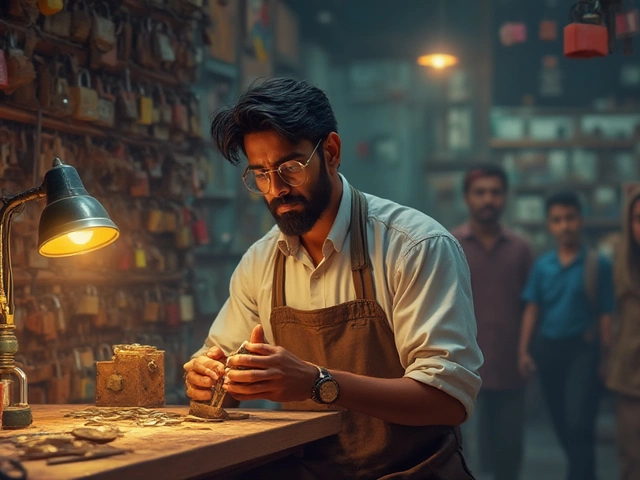Ever get lost scrolling endless lists of diploma courses and wonder, “How long will this actually take?” You’re not alone. Loads of students—and caring parents like me—are asking the same thing. With so many different subjects, colleges, state rules, and wild claims on every education website, figuring out the real length of diploma courses in India can feel like hunting for the last piece of Lego. But let’s clear the maze, no fluff, just straight-up facts.
Understanding Diploma Courses in India: What Are Your Options?
A diploma course in India isn’t just a backup for students who didn’t pick the ‘traditional’ degree path. There’s a whole ecosystem of these programs, built for everyone from 16-year-olds just finishing their class 10 Board exams, to adults re-skilling after a first career. Basically, a diploma course gives practical, hands-on training, so you can start working sooner. These courses come in every flavor—engineering, graphic design, hotel management, healthcare, computer applications, and lots more.
Broadly, diploma courses break down like this:
- After 10th standard: You can jump into basic diplomas (like Polytechnic Diplomas in engineering or trade certificates in tailoring, automotive mechanics, etc.).
- After 12th standard: These diplomas are more specialized—think diploma in nursing, animation, or business administration.
- Postgraduate diplomas: After graduation, these let you specialize further or reskill—like a PG Diploma in Management, Data Science, or Nutrition.
The beauty for students is the shorter duration, lower fees compared to degrees, direct job focus, and the fact that many top Indian employers happily hire diploma holders. It’s no wonder that, according to data from the Ministry of Skill Development and Entrepreneurship (2023), more than 4.5 million students enrolled in various diploma courses across India last year alone.
How Long Does Each Kind of Diploma Take?
This is the big question. How many months or years before you finish and can get to work—or move on to a higher course? Here’s where things get specific (and why you’re probably here). The duration depends hugely on the type of course you pick and when in your education journey you start it. Take a look at this summary table for a quick sense of what to expect:
| Type | Eligibility | Typical Duration | Popular Examples |
|---|---|---|---|
| Polytechnic Diploma (Engineering) | After 10th standard | 3 years (some states allow 2 years with lateral entry after 12th) | Mechanical, Civil, Electrical |
| Medical/Nursing Diploma | After 12th standard (Science) | 2-3 years | General Nursing, Radiology |
| Vocational/Trade Certificates | After 10th/12th | 6 months – 2 years | Welding, Hospitality, Cosmetology |
| Postgraduate Diploma (PG Diploma) | After Bachelor’s | 1 year (some as short as 6 months, or up to 2 years) | PGDM, PGDCA, Data Analytics |
| Part-time/Online Diplomas | Varies | Flexible—often 6 months to 1.5 years | Digital Marketing, Languages |
Now, a diploma course duration in India for most classic, full-time diplomas is between 1 year and 3 years. The most common length? For polytechnic (technical) diplomas, it’s a strict 3 years if you join after 10th class. If you pop in after your 12th, some states offer fast-track, 2-year options (called lateral entry). PG Diplomas are usually 1 year.
Why do the durations vary so much? It’s not just about the subject—it’s also about the state government rules, type of institution (government, private, deemed university), and the level of practical experience provided. For example, a diploma in pharmacy is tightly regulated and almost always 2 years, plus a 3-month internship. Fashion design diplomas can be over in a year, but engineering ones demand close to three. And short skill-based certifications (say, barista training or basic computer hardware repair) might finish in 3-6 months.
Pro tip: Not all short courses are proper “diplomas” as recognized by the AICTE (All India Council for Technical Education) or UGC (University Grants Commission). Double-check when you see 3 or 6-month “diplomas.” If you want real career value, make sure the course is approved!

What Else Determines How Long You’ll Study?
Most colleges stick to the durations above, but the real-life experience can be different. If you choose a regular full-time course at a well-known government polytechnic, you’re on a fixed schedule—no skipping ahead. Private institutes, especially those offering creative diplomas (animation, fashion, interior design), often pack a lot into shorter programs to get you job-ready faster. A distance learning or part-time diploma lets you study at your own pace, so you could finish quicker (or slower) depending on your time management.
Internships and practical work sometimes stretch out the end date a bit, especially in healthcare or technical subjects. For example, the Pharmacy Council of India clearly rules that the 2-year D.Pharm diploma isn’t complete unless you finish a 500-hour practical in a real pharmacy/hospital, which usually adds another 3 months at the end. The same goes for Nursing, where a final internship is mandatory.
Another quirky thing: some state boards (like Maharashtra’s MSBTE) use a strict semester system, so each year automatically splits into two terms. If your college has fast-track or summer terms, you might be able to squeeze out a three-year course in less than 30 months. But that’s rare outside of private institutions charging premium fees.
One detail that’s easy to miss—holidays, strikes, or delayed exams can add weeks or months to your calendar. During the COVID-19 pandemic, thousands of final-year diploma students faced delays of nearly a year, mostly due to exam postponements. Things are more regular now, but huge monsoon floods last year in Chennai and Assam? They shut down major diploma colleges for weeks, again pushing graduation dates back.
Admissions matter, too. If you miss an admission cycle, you’re usually waiting a whole year—Indian diploma admissions for big courses (like engineering or nursing) only open once a year. Some short-term skill diplomas do have rolling admissions.
Tips, Real Stats, and Choosing the Right Course and Duration
Choosing the right diploma isn’t just about picking the fastest one. Trust me, as a dad and someone who’s walked schools in both the UK and India, you want to balance speed, recognition, your career plans, and actual interest. So, how do you avoid regrets?
- Check Recognition: Is the course approved by AICTE (for technical), Indian Nursing Council (for nursing), or a recognised state board?
- Clarity on Duration: Ask the admissions office for details in writing. Don’t just trust a website’s “6 months to 3 years” claim. Some private colleges pad durations or exaggerate job placements.
- Program Rigor: Look for programs with built-in internships—these might take a few months longer but give you crucial, hands-on skills employers want.
- Check Local vs National Value: A diploma from a big city (Mumbai, Bangalore) or a known government college travels better on your CV than “Brand New Star Polytechnic, Ranchi.” Employers notice.
- Ask Alumni: LinkedIn is your friend here. Reach out to recent grads—did the program take as long as promised? Did they get decent jobs?
Let’s tuck in some real stats to finish strong. A 2023 survey from the National Statistical Office (NSO) revealed:
- The average length of a diploma course across all disciplines in India: 2.4 years.
- Engineering and polytechnic diploma students make up over 62% of all diploma enrollments annually.
- Among diploma holders surveyed, nearly 58% found full-time jobs within six months of course completion—that’s higher than the rate for non-technical bachelor’s degree students!
- Short-term, 6-month certificate “diplomas” had the lowest job placement rates, under 30%—so be wary of very short, unrecognised programs with promises that seem too good to be true.
Some bonus advice for parents or students searching from abroad (like my niece, hoping to jump from Bangalore to the UK with a nursing diploma): International recognition varies. Diplomas from top Indian institutions sometimes get accepted for direct jobs or further studies in countries like Australia, Canada, or the Gulf, but you usually need course-by-course evaluation by their local councils. Double-check before enrolling if working/studying overseas is in your plans.
At the end of the day, the best diploma is the one that gets you out doing what you want, comfortably within your time and budget. Whether you’re going for the three-year polytechnic, a lightning-fast IT course, or a one-year PG diploma in business, get the facts, ask tough questions, and always choose quality over quick fixes.





Write a comment